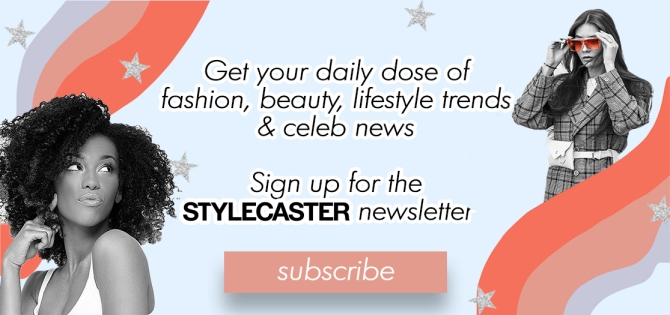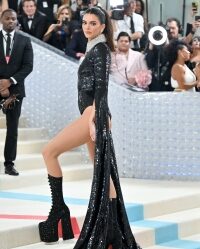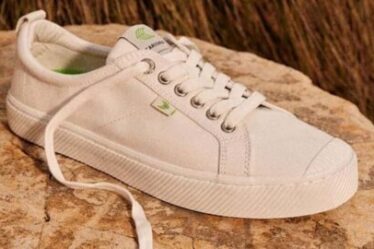
Shopping when you’re a fat person is not easy, let me tell you. Ask anyone who’s slightly larger than a size Large, and the answer will be pretty much the same: I can never find clothes that fit me properly and look nice at the same time. Fat folks have been excluded from the shopping and fashion experience for a long time now, and even though we do have some plus-size options available in the market, they’re mostly US and UK-centric and not readily available everywhere. If finding high-quality, locally made plus-size clothes is a hard task in the US, don’t even get me started on how complicated it is to do the same in Mexico (where I’m from) and in Latin America in general. Despite Latinx women being stereotypically known for being “curvy”, the plus-size market is still relatively small, if not nonexistent.
Don’t get me wrong, there are a few brands here and there who are trying to change that, but since all of them operate on an online-only basis, the situation remains mostly the same: if you’re a fat person, the chances of being included in the normal shopping experience are still slim to none. We don’t get to go through racks of clothing without worrying if the store even carries our size. We don’t get to try on heaps of clothes and ask our friends for opinions before buying something. If we want a Latin American plus-size design, we have a dozen or so options from four or five small brands.
I came across Laura Agudelo’s Instagram profile during one of my many (many, many) procrastinating scroll binges a few weeks ago. Her style instantly enamored me; it’s not often that I get to see other fat Latinas being so playful and bold with their clothing. I realized that not only was she a blogger (the kind that still updates her blog, La Pesada de Moda, even after 12 years, and doesn’t just post pretty pictures on Instagram—truly a dying breed!) and a teacher, but she’s also been a full-on plus size activist for Colombian women for the past 17 years. I knew I had to know more about her, so I DMd her. I can only say that whole “never meet your heroes” deal does not apply to Agudelo.
“
You don’t dress like a fat person! You look great!
”
Her fat activism began in the early 2000s like many fat folk’s fashion-related projects start: because we can’t find clothes that are beautiful and simultaneously fit our bodies. In 2005, she teamed up with a close friend of hers who worked at a newspaper. Despite not being a fan of the attention, Laura realized the only way to start a conversation was by doing something conversation-worthy. She agreed that the best way to get people talking about fat people and fashion for fat people was to plaster her face in the Sunday newspaper. Slowly, one article became two. Two became three, three became four, and so on.
Two years later, her love of blogs started. She started following fashion blogs, taking inspiration from them, and applying that to her everyday wardrobe. It wasn’t long before she started getting comments that alluded to her amazing style: “You don’t dress like a fat person! You look great!”. She soon realized that what they meant was she dressed normally instead of dressing in all-black in an attempt to hide her body (like fat people are generally expected to do). She wore bold prints, loud colors, and played around with texture and cuts; she had fun with her styling and it showed.
“Back then there were no options that were appealing to me, so I decided to write about what I knew, which was not being able to find the clothes I wanted to wear. I replicated that same “outfit post” model I’ve seen in other bloggers do and went from there,” says Agudelo. She started posting her looks on a daily basis, which she admits is something she isn’t entirely comfortable doing, but she knows her photos have a clear purpose: “I wanted other fat women to realize it is possible to dress in a way other than what we’re ‘expected’ to; in a way that makes us feel good.”
“I want to show that it’s possible for fat women to take full-body photos of their looks, however crazy and bold they are,” says Agudelo. “It’s important for me to show how I look when I’m out on the street, living my life; not because I think I’m the most stylish fat woman in Colombia, but because I feel it’s important to normalize fat women showing off their bodies and their styles.”
Eventually being a fat fashion blogger was not enough to create the kind of change Laura wanted in the Colombian fashion industry. After a particularly rough period in her life, she came up with the idea of creating the first-ever plus-size exclusive pop-up shop, GORDA Salón de Moda Plus Size, comprised entirely of locally made Colombian fashion brands. What started with just 5 different brands back in 2019 is now a bi-annual weekend pop-up event featuring over 18 Colombian, plus-size fashion brands, workshops and conferences. It’s a space where fat women can enjoy the joys of participating in fashion as non-fat people do. “GORDA can be a place to shop, sure, but it can also be therapeutic if people let it,” Agudelo mentions in one of her TikToks about the event.
To be a part of GORDA, brands have to be 100 percent Colombian. “We’re open to brands in other parts of Latin America, but our primary focus is to tend to the needs of the Colombian public,” says Agudelo. “We don’t want fast fashion, we want brands that are local, create local jobs and have fair practices”. The brands that wish to be featured in GORDA have to have at least four years in the market. “This is non-negotiable”, says Agudelo, “since it gives brands enough time to get to know the industry and the fat woman as a shopper: their insecurities, their shopping patterns. Four years is enough time for these brands to develop the sensibility that plus-size shoppers need.”
She’s not wrong; the fashion industry as a whole is tremendously fatphobic, even with size inclusion and fat activism being such hot topics. As a fat woman, I’m used to getting dirty or funny looks from sales associates pretty much everywhere I shop—even if I’m not shopping for myself. I’m made to feel like I don’t belong there. Fat folks are people that are used to being abused and bullied into believing our bodies and our existence is wrong and that we’re not worthy of participating in the fashion industry.
Many brands need to understand that making plus-size fashion is not simply adding a few inches to a pattern; we don’t just want bigger clothes, we want clothes that fit us. Making plus-size fashion means understanding how fat bodies exist in clothes and knowing how to make clothes for bodies with bellies, fat arms and small backs. We’re not all the “ideal” curvy image that we’re shown in the media.
Because of this, Agudelo is teaming up with Arturo Tejada Cano University, a fashion and marketing university in Bogotá, Colombia. She’s creating the first ever plus-size design masterclass in Colombia, which will start this fall semester. For the first time ever, Colombian fashion students (or anyone who wants to join, since the class will be available virtually) will learn to understand how fat bodies exist in the clothes they design. One small step for Colombian fashion students, an oversized step for the fashion industry as a whole.
When I graduated from fashion school in Mexico nearly a decade ago, I was the only fat graduate; I had hopes and dreams as big as my measurements. But I was thrown into an industry that despised and excluded people like me, and did little to understand us as potential customers. Because of people like Laura Agudelo, I’m hopeful that new Latinx designers will have the sensibilities and tools needed to elicit the change that the Latinx plus-size fashion industry desperately needs.



